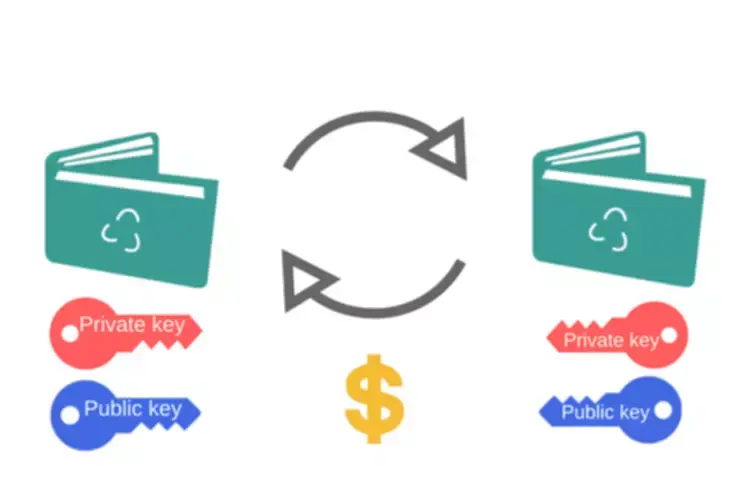An attacker with 34%(opens in a new tab) of the stake has a very good chance of succeeding in this attack, as explained in this note(opens in a new tab). In theory, though, this attack could be attempted with smaller stakes. This is critical because these epoch boundary blocks become the checkpoints that Casper FFG uses to finalize portions of the chain. The attacker simply withholds their block until enough honest validators use their FFG votes in favor of the previous epoch-boundary block as the current finalization target. They attest to their block and the remaining honest validators do too creating forks with different target checkpoints.
When you validate with your coins, it’s believed to indicate that investors are expecting profits based on the efforts of others. The SEC didn’t specifically mention Ethereum, but the timing led to people getting worried about the future of Ethereum. The network should theoretically become safer now that it’s now more expensive to validate transactions on the blockchain. If you want to activate validator software, you will have to stake 32 ETH (a hefty price that fluctuates depending on the price of 1 ETH). Ethereum’s Layer 1 and Layer 2 are integral components of the blockchain’s ecosystem. While Layer 1 provides a secure and decentralized foundation, Layer 2 solutions offer scalability and cost-effectiveness.

Proof of work has been used by the Ethereum mainnet since its genesis, and it underpins older blockchains like Bitcoin. Proof of stake is a type of consensus mechanism that differs from the traditional proof-of-work one. The term “downtime” refers to the period of time during which a validator is offline and unable to produce new blocks. ethereum proof of stake model This can be due to network delays, software issues, or hardware problems. Investors are betting the change will be significant for the price of ether, which has gained more than 50% since the end of June, compared to a slight loss for bitcoin. Proof of stake also hasn’t been proven on the scale that proof-of-work platforms have.
Some community members were so upset they kept mining the original chain, resulting in two Ethereums—Ethereum Classic and what we have today. If it happens again, the success (and mining power) behind any competing version of Ethereum will depend on the value of its coin in the open markets. As Ethereum transitions to its new protocol, another risk is that a group of disgruntled miners could decide to create a competing chain. All of the smart contracts, coins, and NFTs that exist on the current chain would be automatically duplicated on the forked, or copied chain. Proof-of-stake is more complex than proof-of-work, which means there are more potential attack vectors to handle. Instead of one peer-to-peer network connecting clients, there are two, each implementing a separate protocol.
- The authors describe the LMD rule giving the adversary “remarkable power” to mount a balancing attack.
- If 1/3 or more of the staked ether is maliciously attesting or failing to attest, then a 2/3 supermajority cannot exist and the chain cannot finalize.
- Usually this is done by verifying the inclusion proof inside the ZK proof that is submitted to Ethereuem.
- Using this common history, they assess whether new blocks of transactions are valid.
There have been many phases, testnets, and adjustments since the journey began. Keep reading to learn more about the new consensus mechanism and how it will affect Ether and crypto investors. After staking your ETH through Lido, you will receive an equivalent amount of stETH tokens, which represent your staked ETH and any accrued rewards. These stETH tokens can be used in DeFi protocols or even sold if you need liquidity.
The greater the proportion of the stake controlled by the attacker the greater their voting power, especially at certain economic milestones that we will explore later. However, most attackers will not be able to accumulate sufficient ether to attack in this way, so instead they have to use subtle techniques to manipulate the honest majority into acting a certain way. This type of attack is not possible on Ethereum because of the finality gadget that ensures all validators agree on the state of the honest chain at regular intervals (“checkpoints”). This simple mechanism neutralizes long range attackers because Ethereum clients simply will not reorg finalized blocks. New nodes joining the network do so by finding a trusted recent state hash (a “weak subjectivity(opens in a new tab) checkpoint”) and using it as a pseudo-genesis block to build on top of.

Since Ethereum’s transition, the amount of Ethereum staked has nearly doubled. The total has grown 93% to 26.5 million Ethereum worth close to $43 billion, according to a dashboard on Dune created by Dragonfly Data Scientist Hildebert Moulié. Crypto has garnered a mainstream reputation for consuming lots of energy. And Canadian investor Kevin O’Leary is among those who have highlighted ESG concerns as one of the main things holding crypto adoption back.
However, lower fees haven’t come into effect on the Ethereum network yet. Instead of releasing the votes to keep an even split between two forks, they use their votes at opportune moments to justify checkpoints that alternate between fork A and fork B. This flip-flopping of justification between two forks prevents there from being pairs of justified source and target checkpoints that can be finalized on either chain, halting finality.

The merge is one of a set of upgrades that should also make Ethereum faster and cheaper to use. Right now, Ethereum is beleaguered by slow transaction times and high costs. At peak congestion times, a simple swap on Uniswap for tokens worth $1 could cost you over $50 in transaction fees. Under proof https://www.xcritical.in/ of stake, transactions are confirmed by addresses that have staked—pledged to a smart contract—lots of ETH. While proof of stake conceptually makes the rich richer, it doesn’t boil the oceans, either. Proof of Stake (PoS) is a type of consensus mechanism that is used to secure blockchain networks.
From all accounts, it appears that the actual merge on September 15 went just fine, despite concerns from various experts. However, many users may have had high expectations that simply haven’t been met yet. Some are saying the merge only laid the infrastructural foundation for future solutions to these issues. There’s hope that quicker transactions and a reduction in fees could lead to more investors on the Ethereum network. This merger is positive news for those who are socially conscientious investors because of the significant decrease in energy consumption. The merger should make it easier to introduce upgrades to the network in the future.
Many players believe that the merge will impact the price of Ethereum tokens. The Beacon Chain will select a group of validators every 12 seconds to designate roles. One of the validators in the group will act as the “block proposer,” while the others will be the “Attesters.” While the proposer initiates a block proposal, the attesters will validate it.
As a result, it will be possible to execute mainnet account balances and other transactions. Furthermore, phase 2 of the upgrade is intended to finalize the application of the eWASM virtual machine. Out of the previous upgrades, Ethereum 2.0 is the most crucial as it drives implementing the PoS (Proof-of-Stake) consensus mechanism.
The huge amount of energy required to overcome the blockchain’s consensus mechanism is a key deterrent for bad actors. In the Ethereum PoS system, the sum of crypto staked by validator nodes (32 ETH) acts as a security deposit. Since the amount can be “slashed” by the network (if a validator fails to behave appropriately) validator nodes have a vested interest in behaving in a way that benefits the blockchain. A Proof of Stake (PoS) network is a system that uses staked cryptocurrency to secure itself.







![Validate my RSS feed [Valid RSS]](valid-rss-rogers.png)